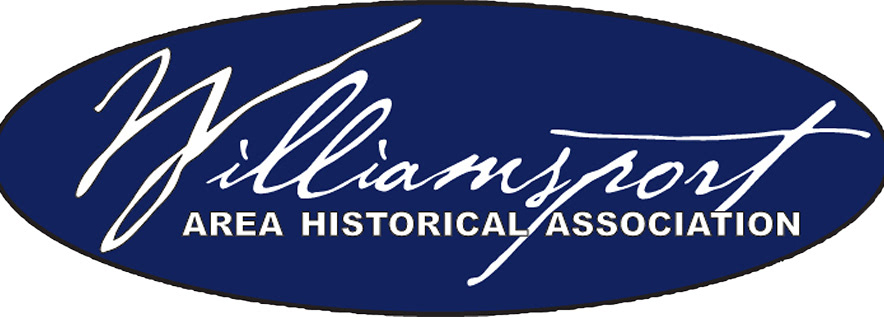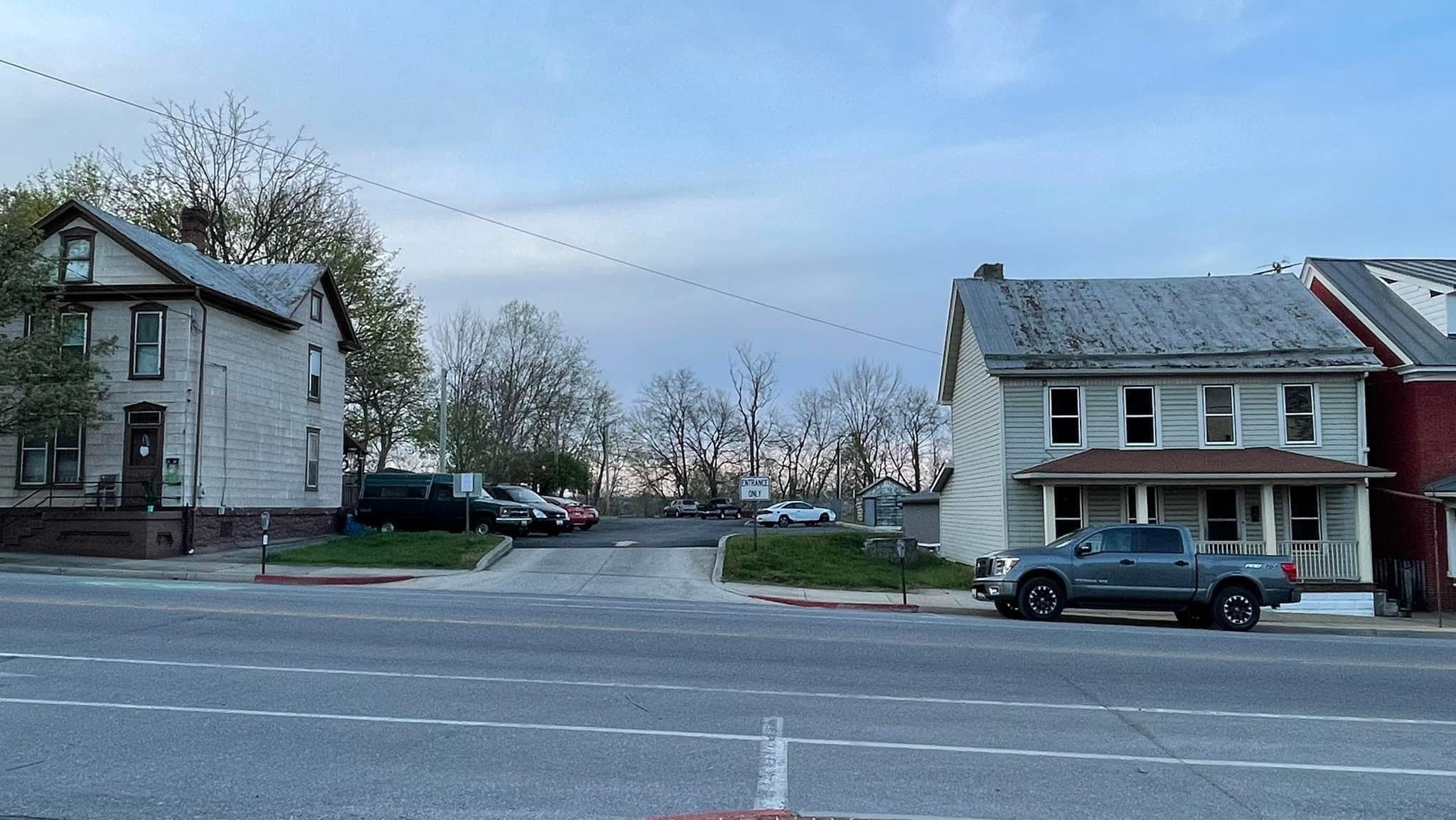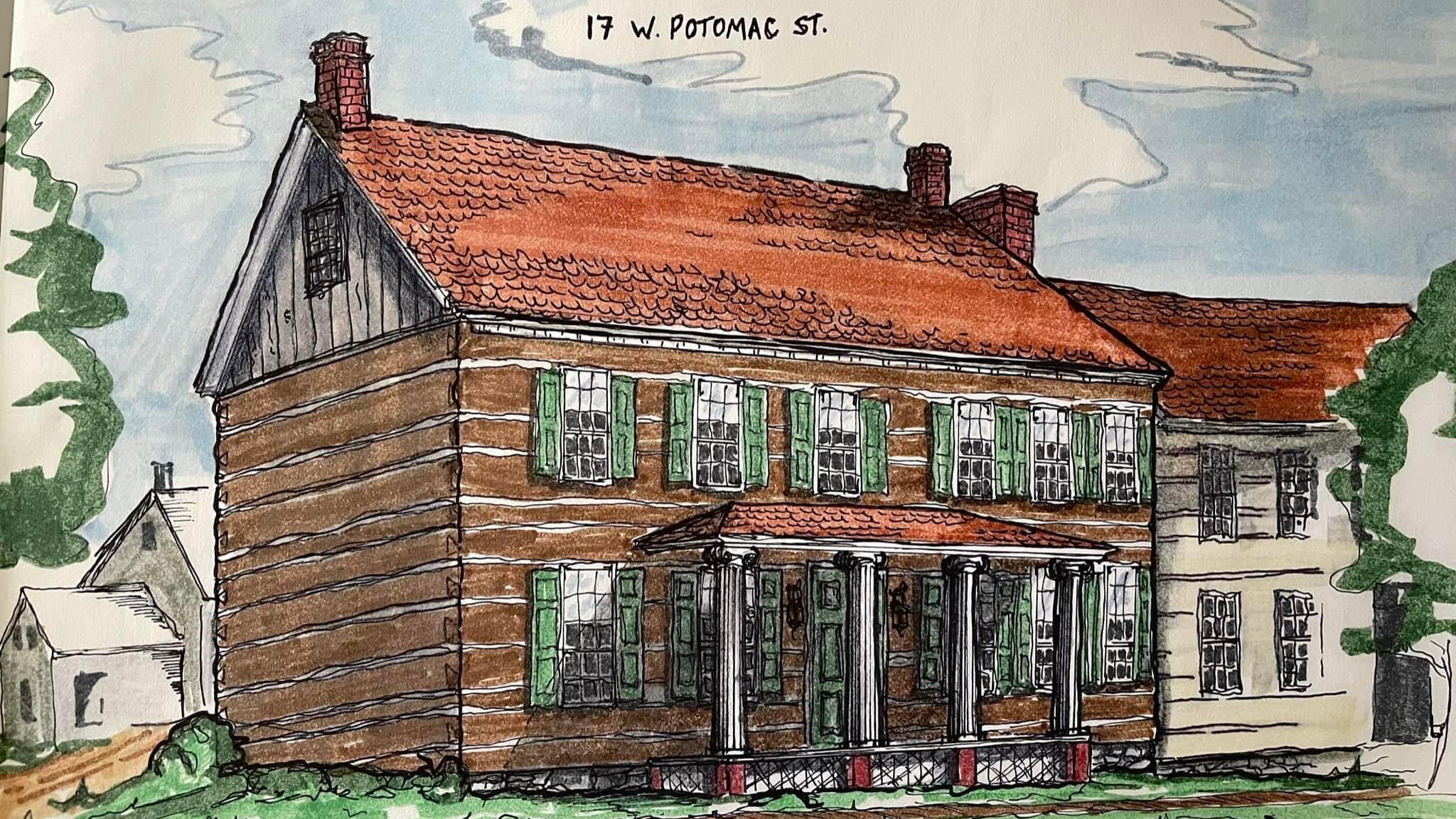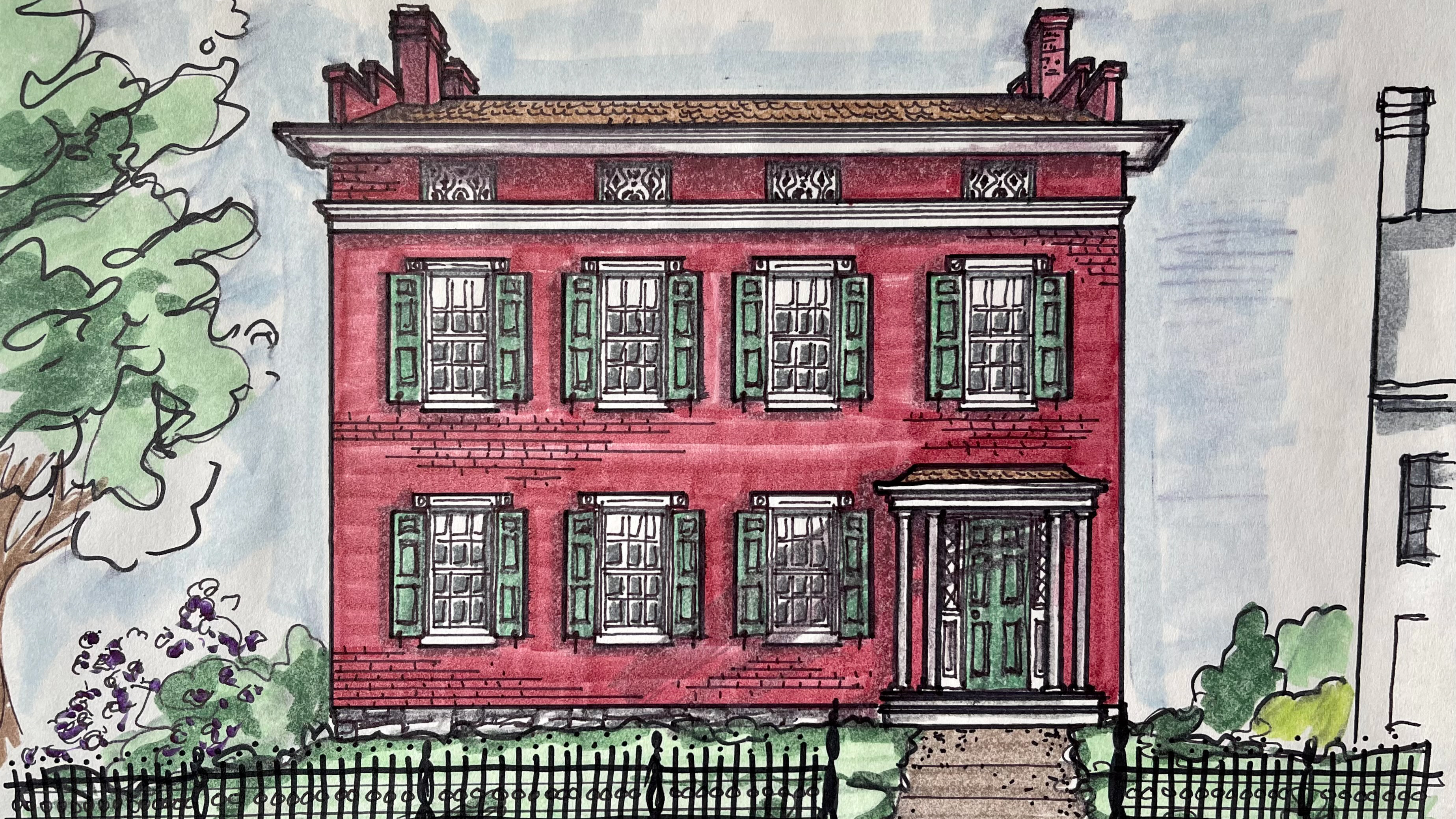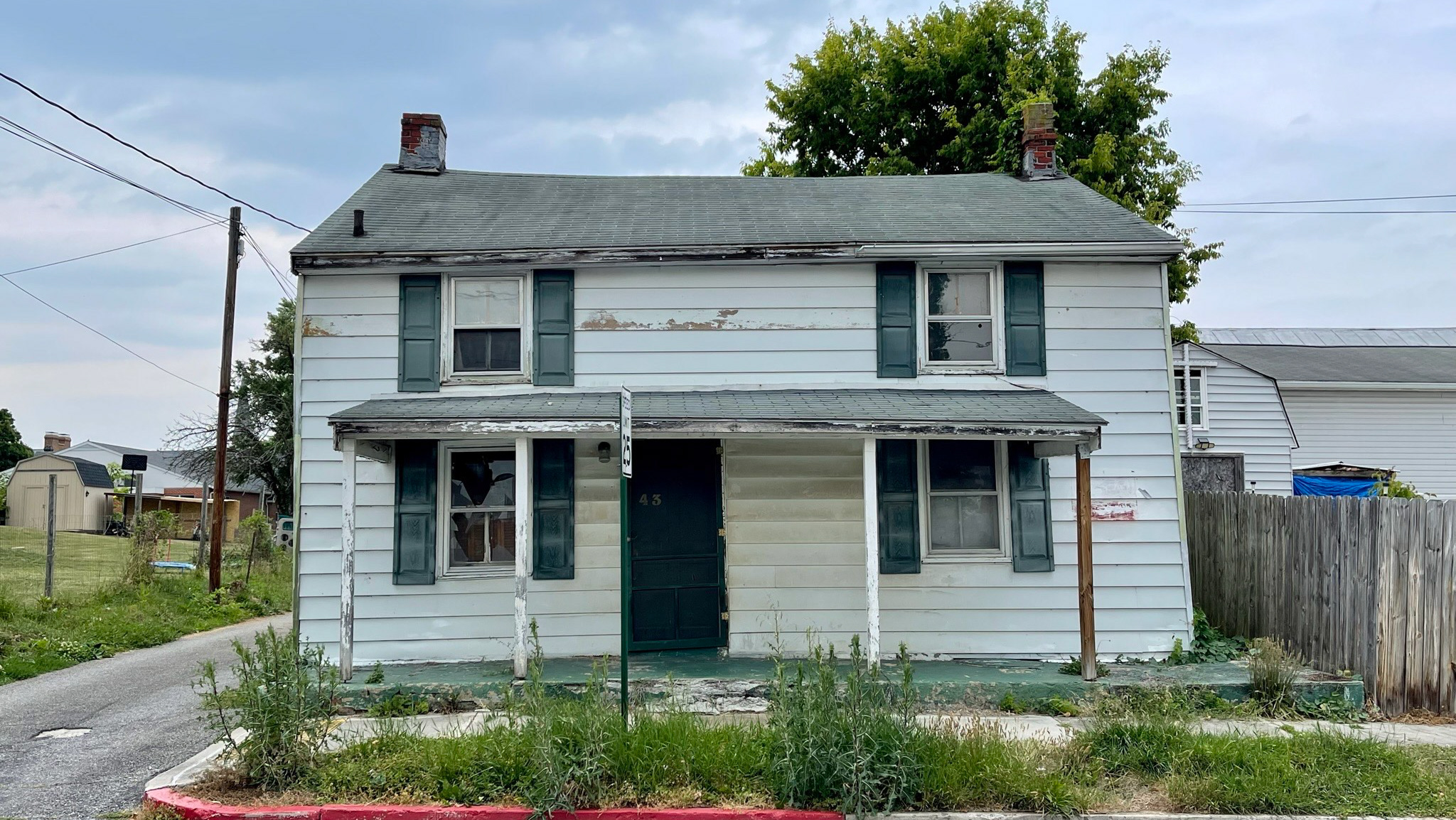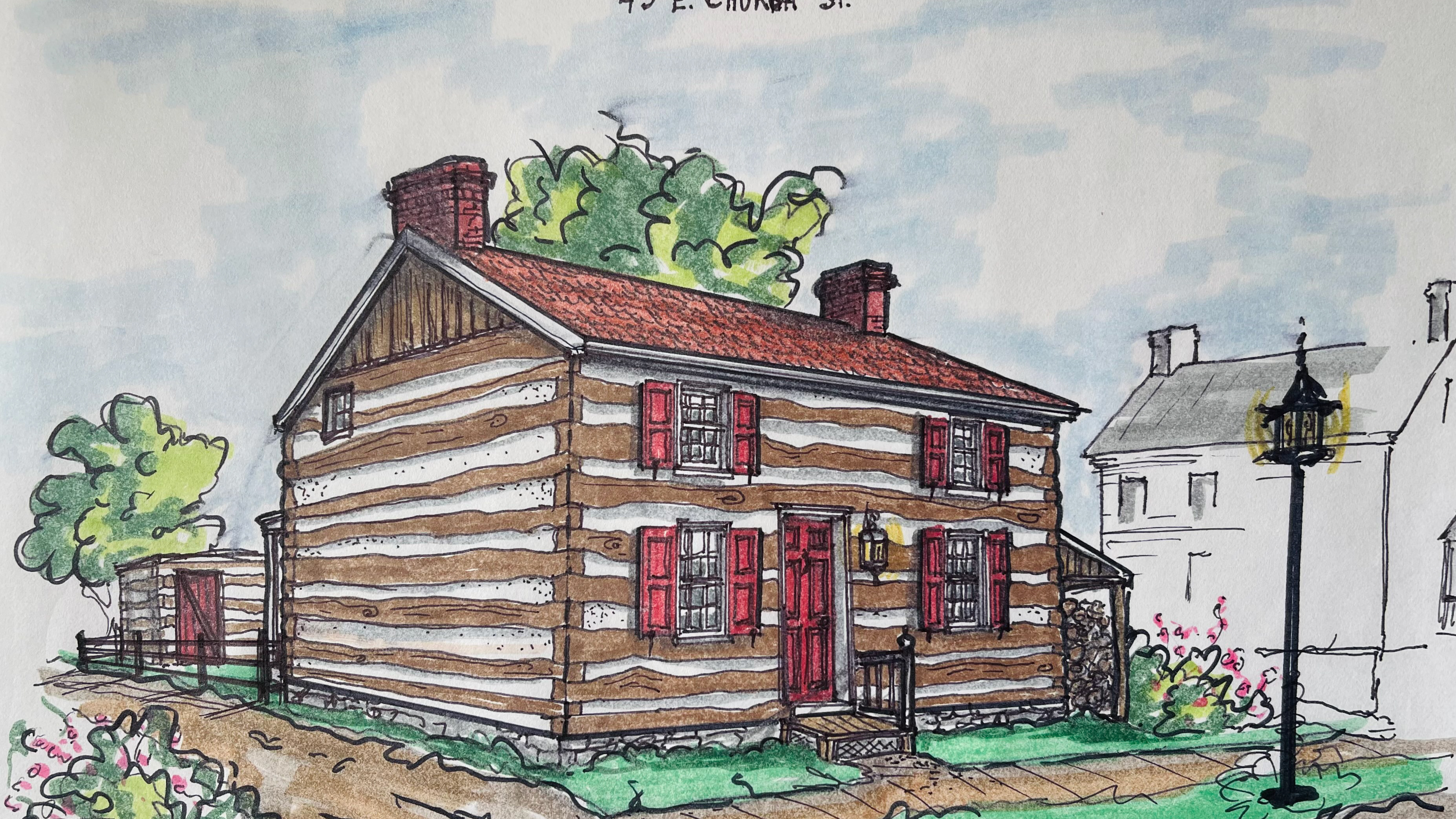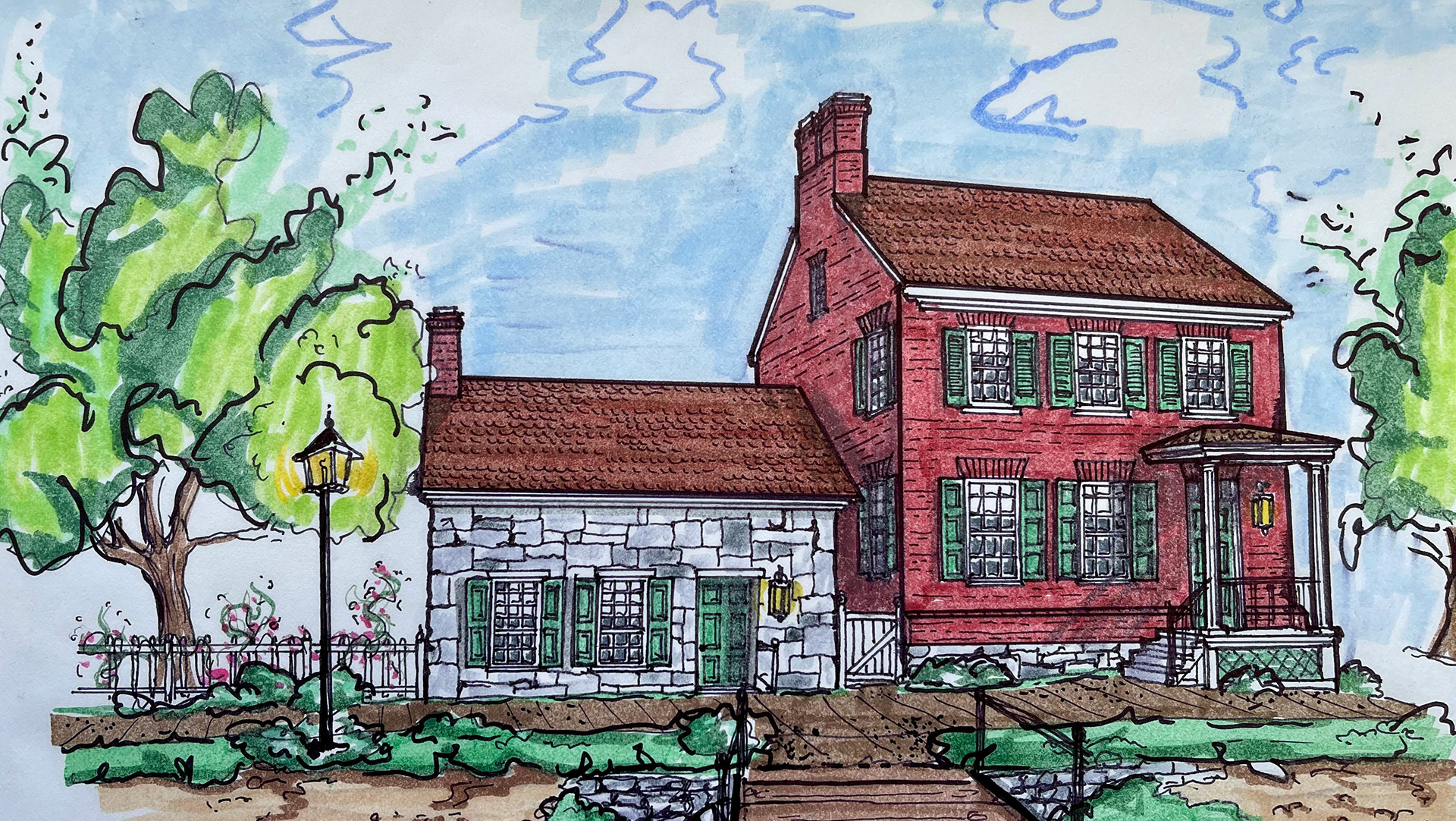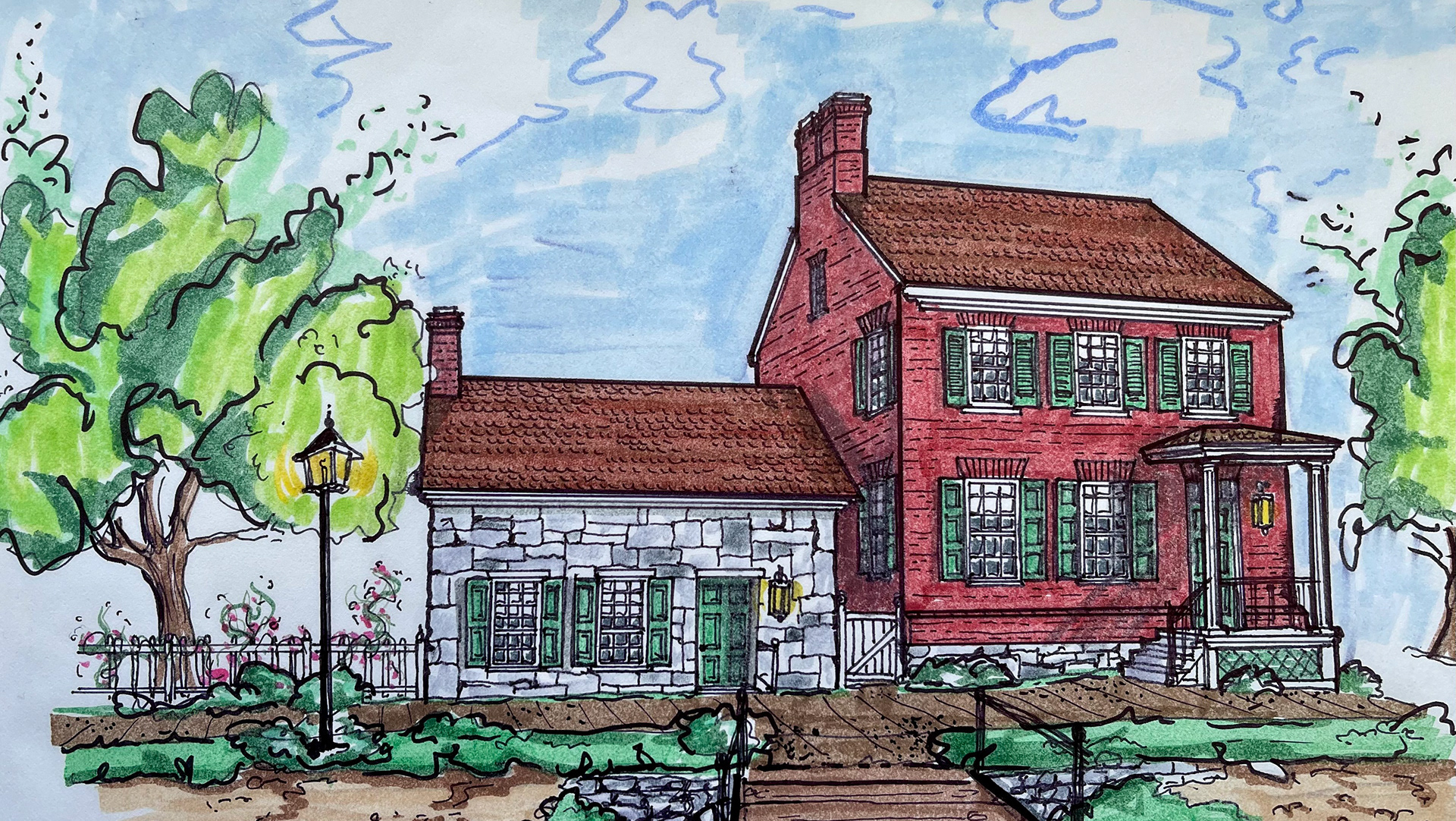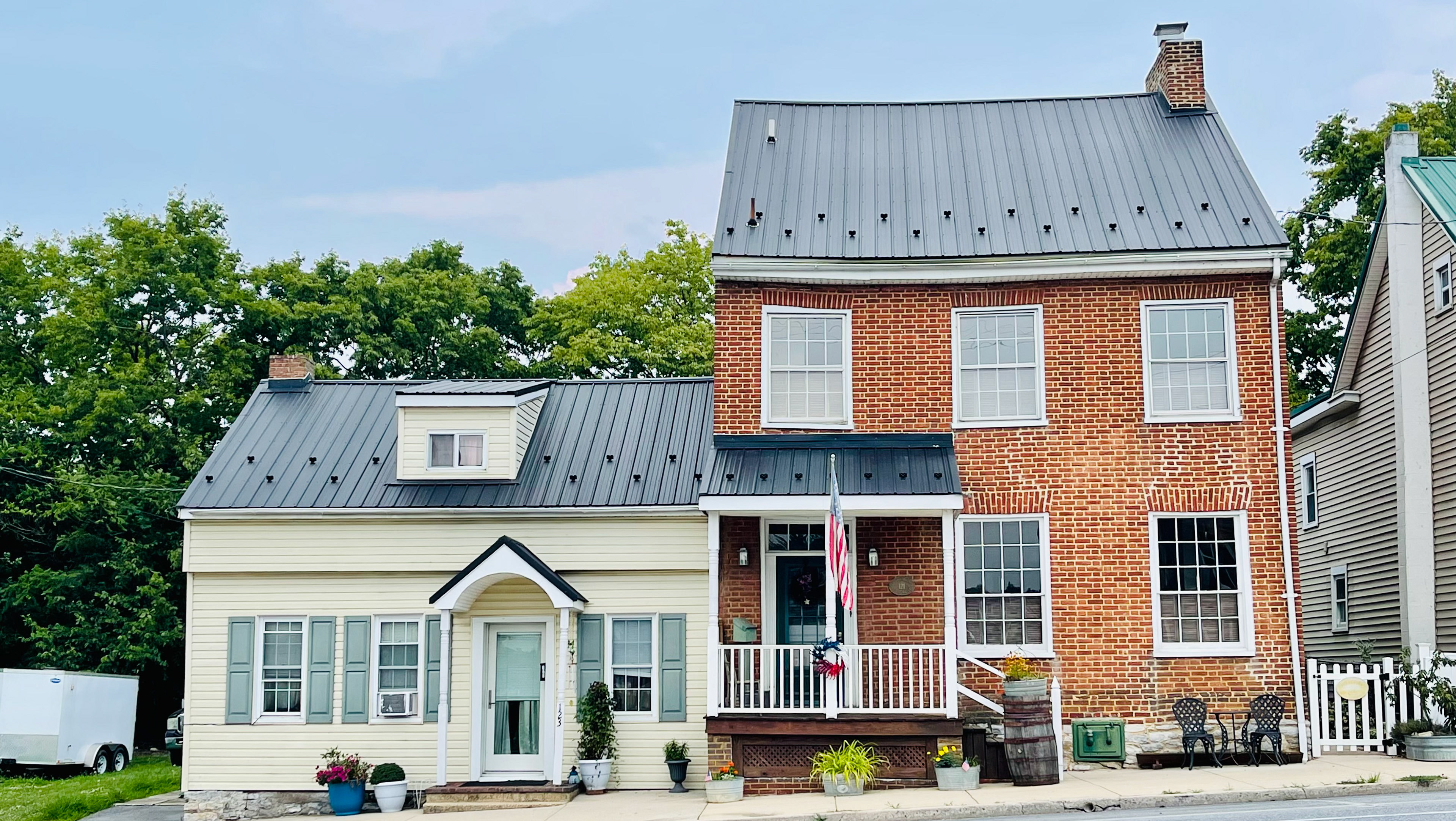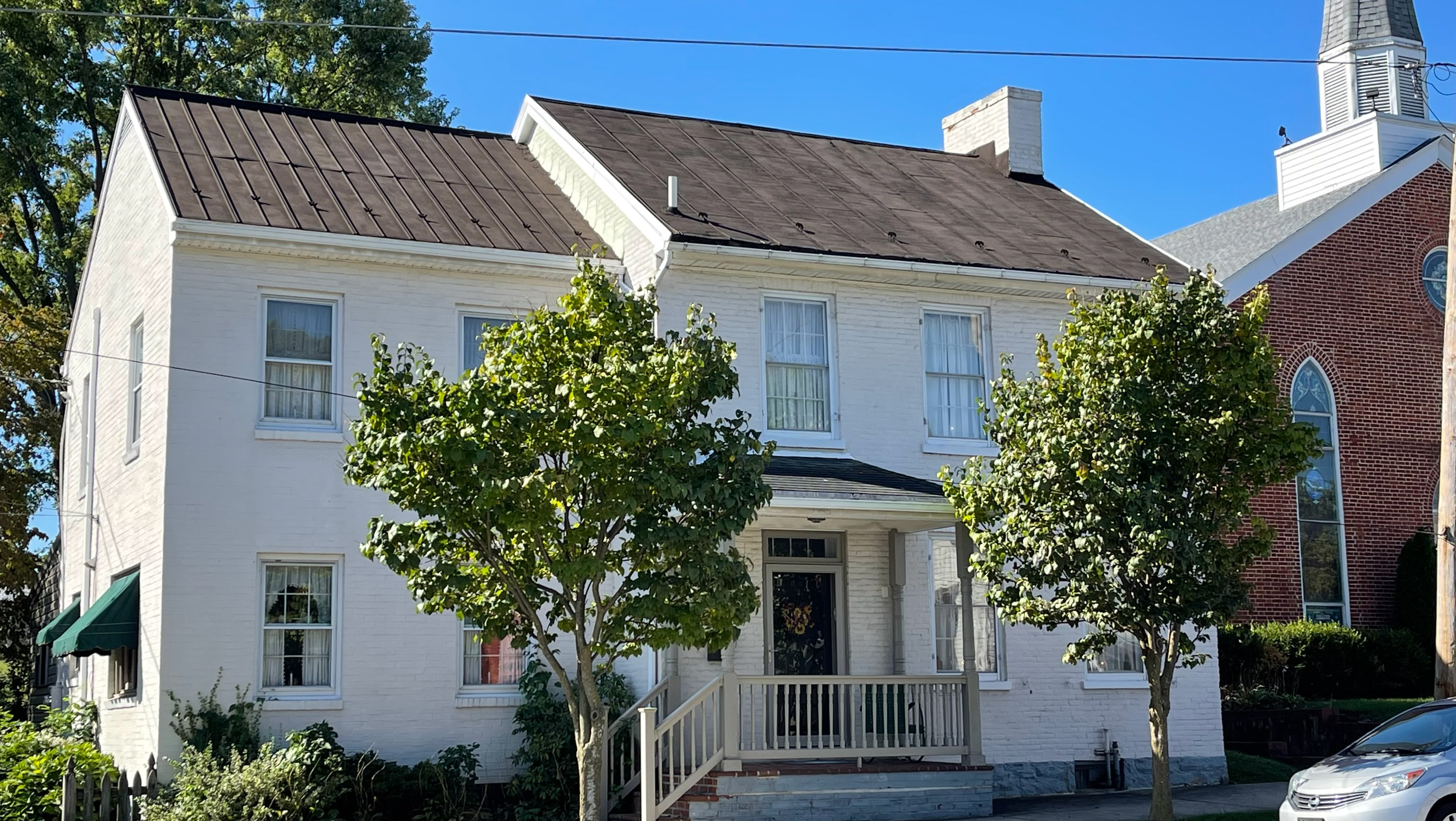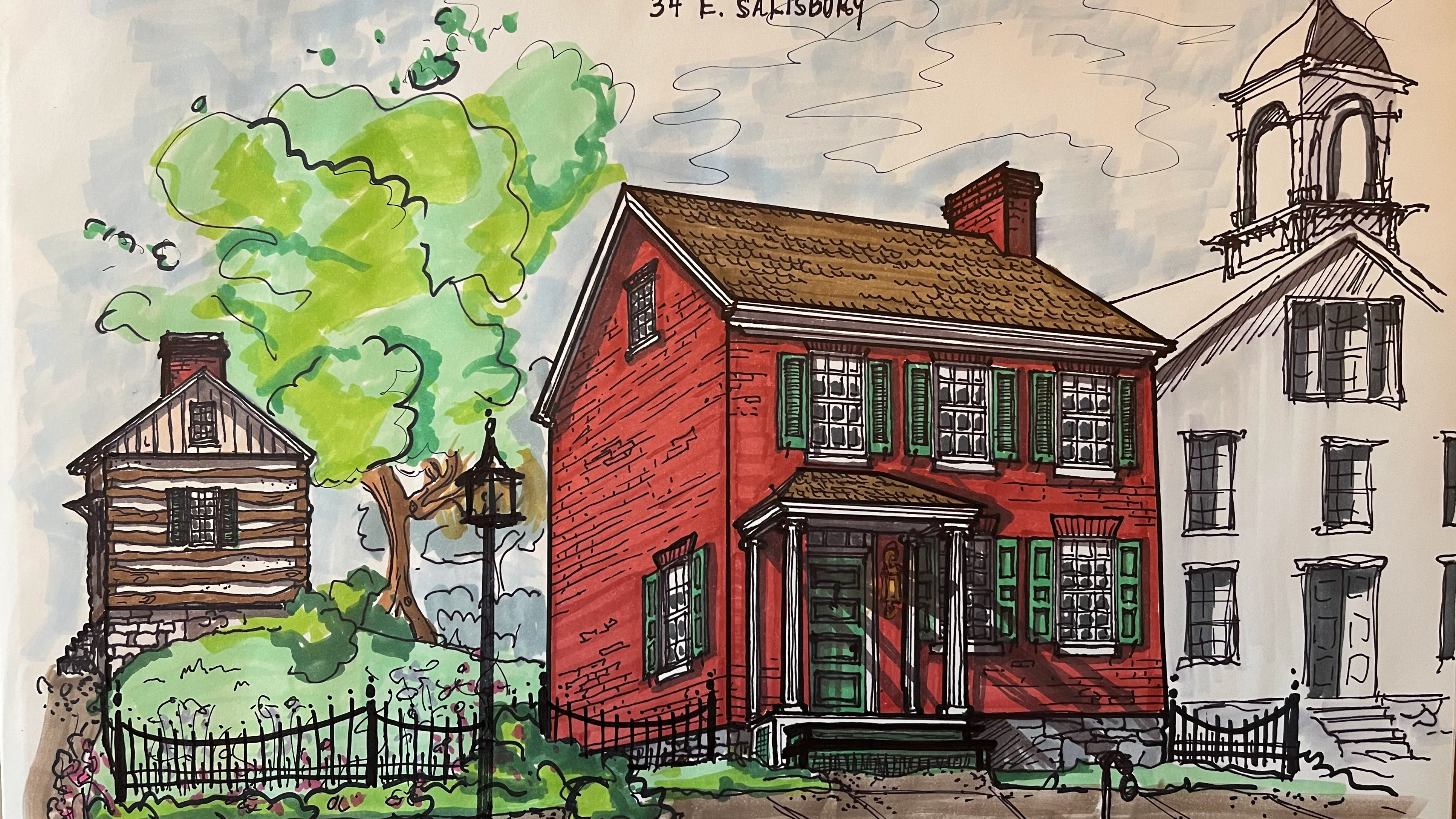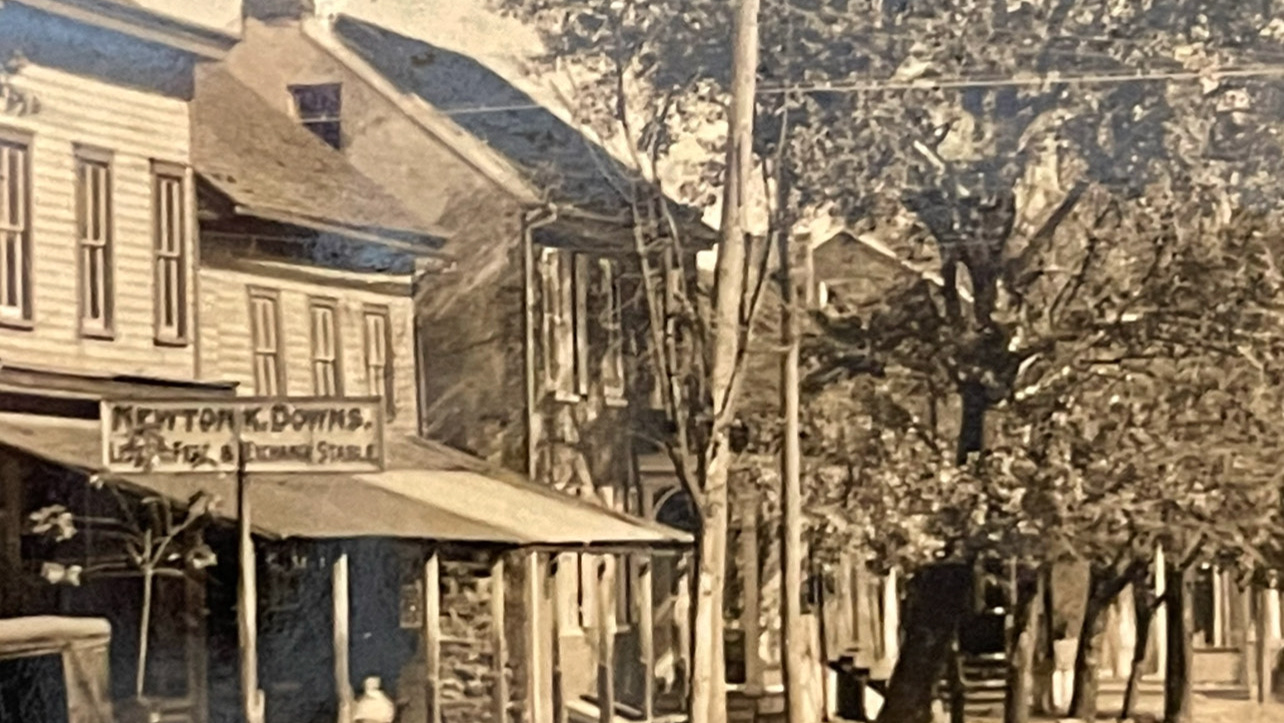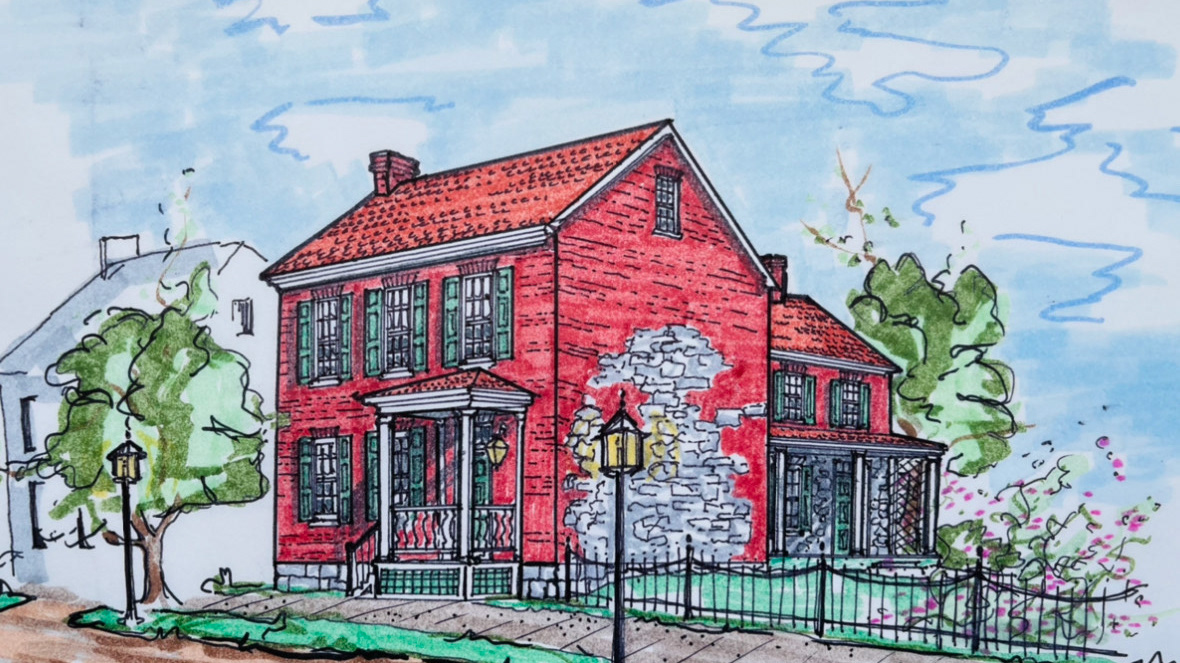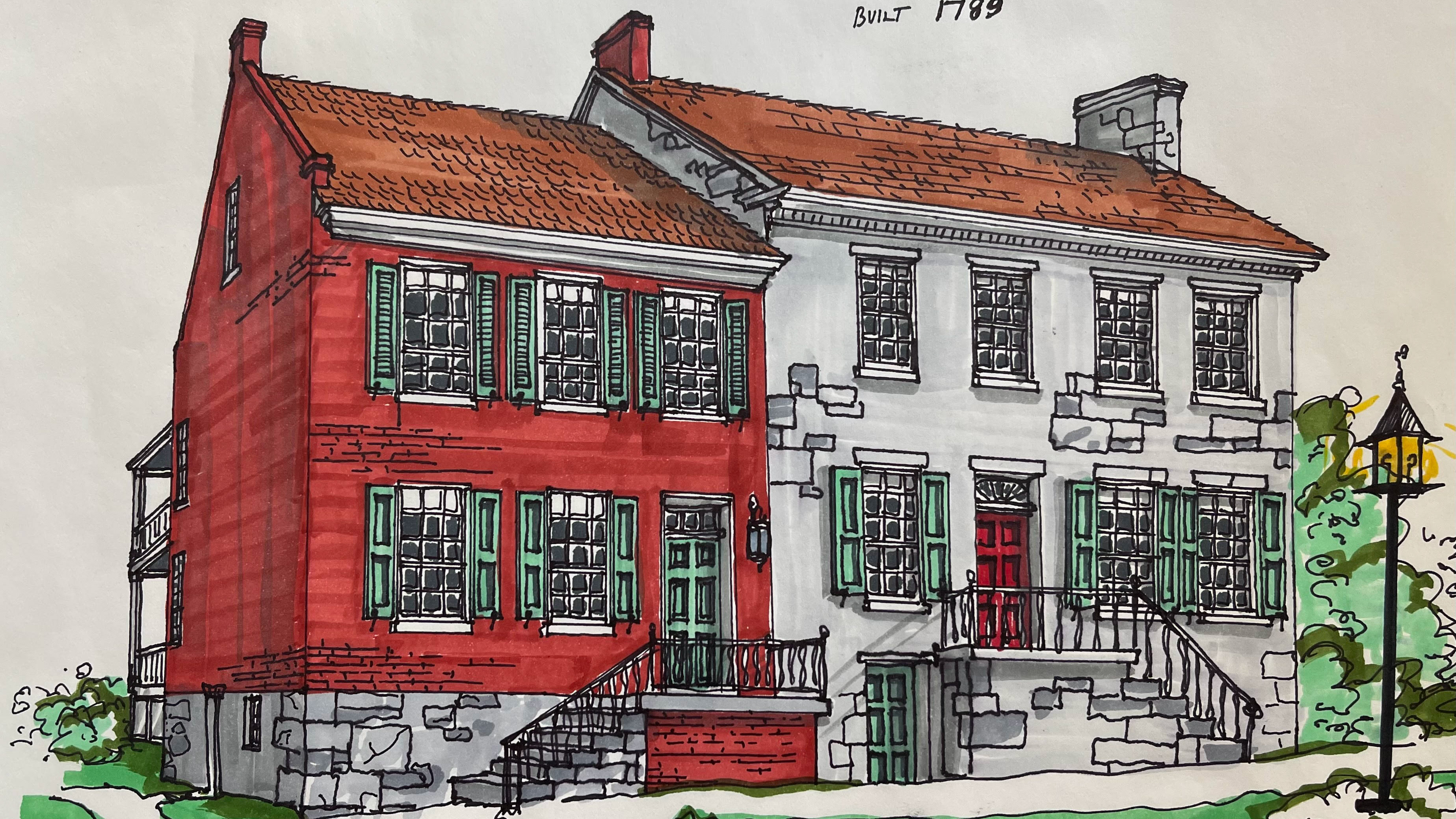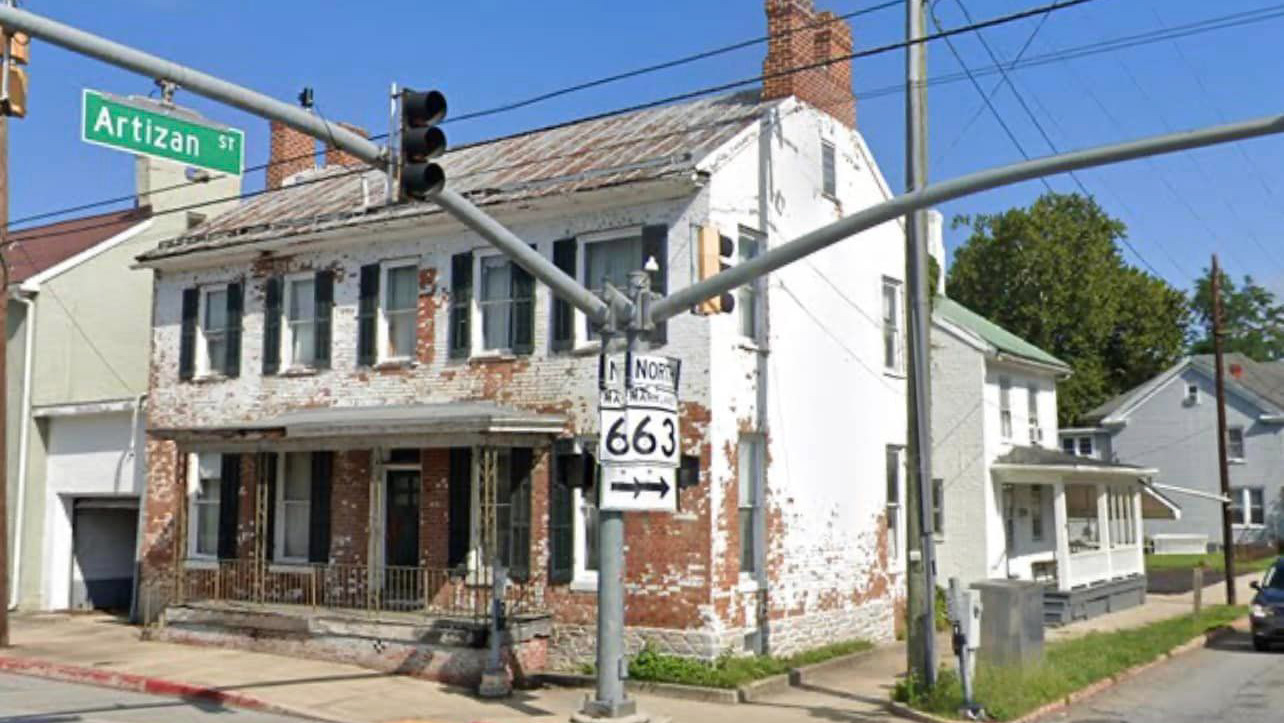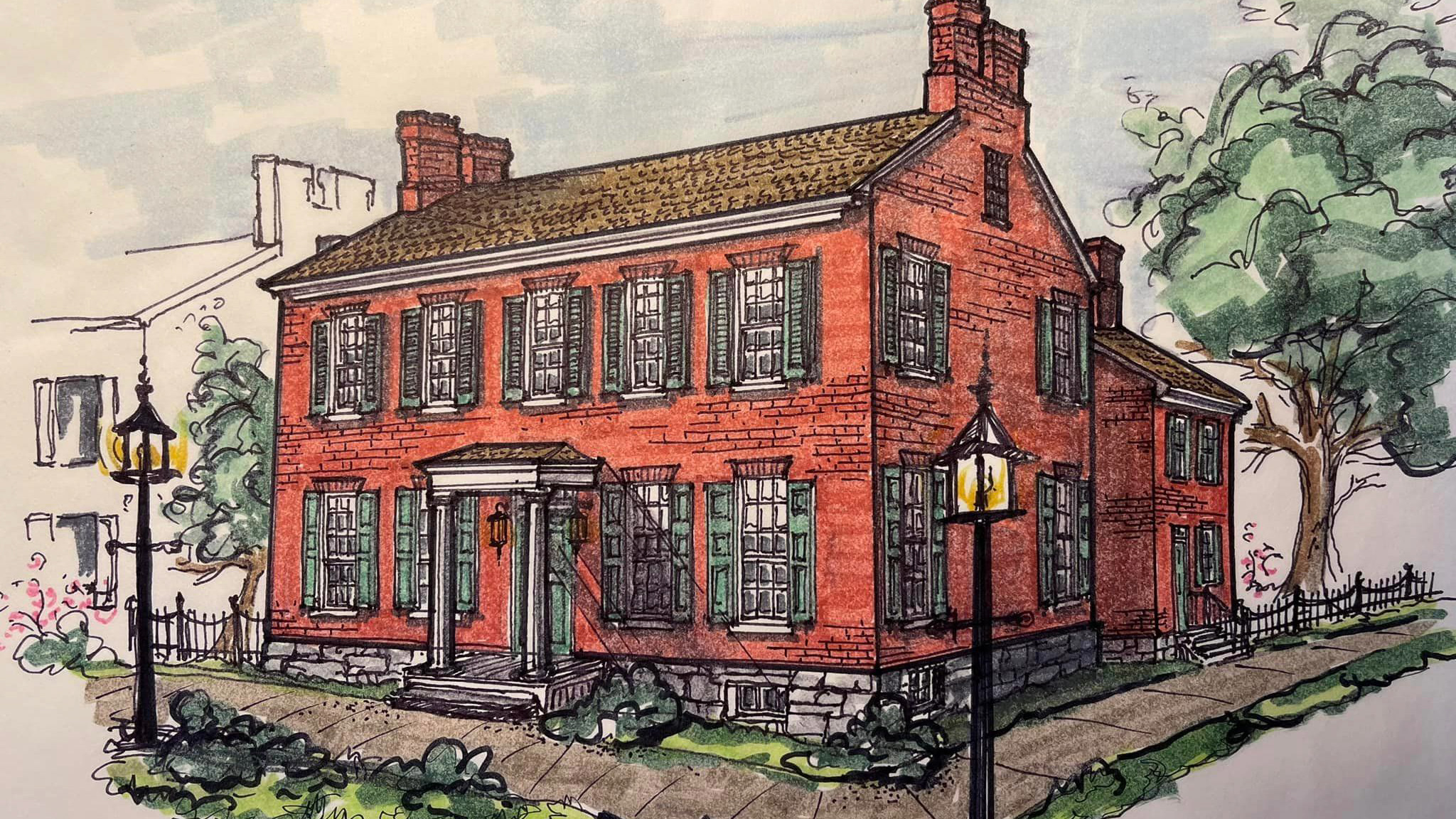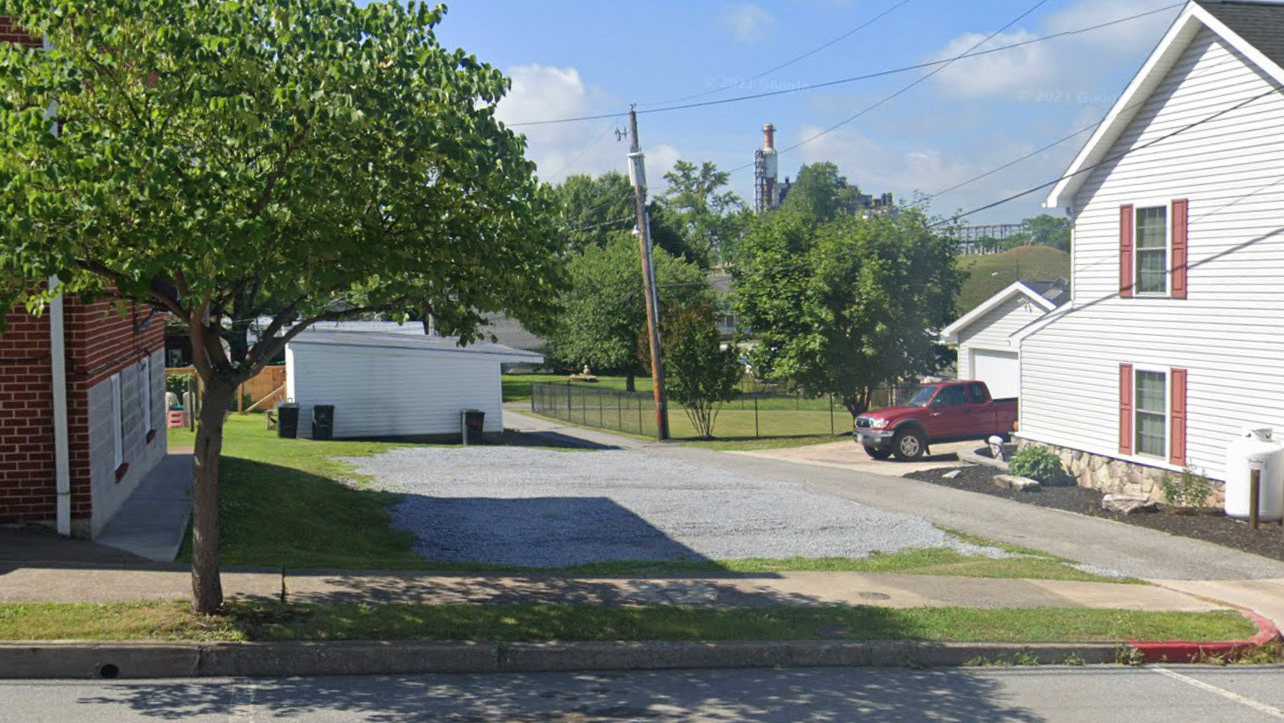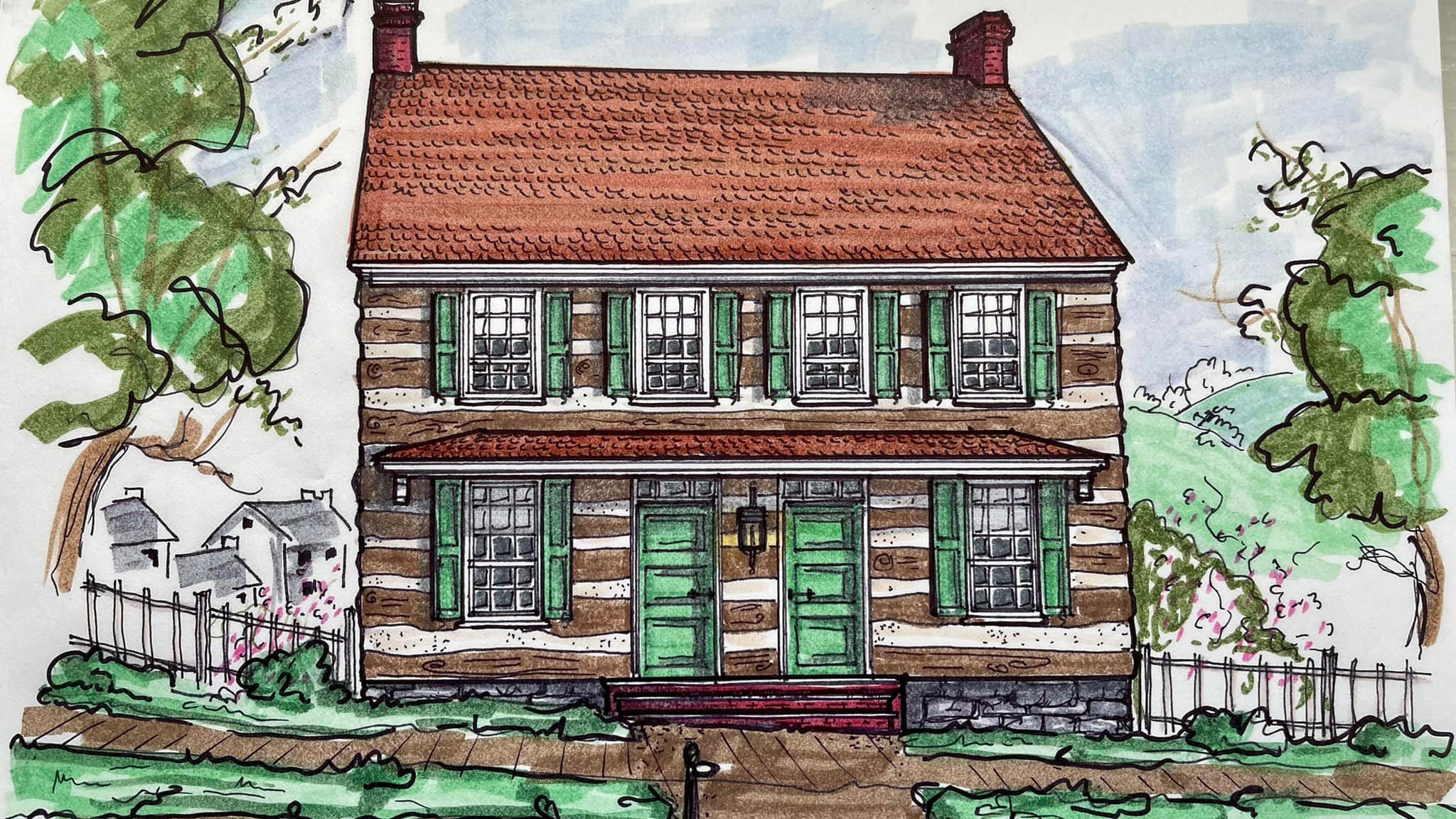On the north side of East Salisbury Street sits a small, charming old federal-style brick house. The original three-bay facade is laid in Flemish bond brickwork. The structure is built upon low limestone foundations. Despite several alterations made to the house throughout its 206-year history, it retains a good amount of its exterior charm. Eventually, the lower windows on the facade were reduced in height, and the difference was filled in with brick. A former owner built a newer brick addition on the west side sometime after 1940. A modern porch extends across the facade of the house.
Original lot 40 was first leased to William Patterson by Edward Green Williams in 1818 for the standard terms. That same year, Patterson contracted Peter Steffey (9th mayor of Williamsport) and Peter Ardinger to build the current brick house with a brick summer kitchen and outhouse for $1250. Steffey, in particular, built several significant brick structures in town, including the Banking Mansion and several other large brick houses along E. Salisbury.
William Patterson's son Jeremiah was a three-time mayor and developer in 19th-century Williamsport who built and resided at the lovely house at Artizan and E. Salisbury, now owned by Denny Grove and Jennifer Michaels. Patterson eventually sold the house at 35 E. Salisbury to John Miller, who sold it to John Baker and Mary Albaugh in 1853 for $715. Lore has it that the lot was traded early for a donkey and two bushels of apples. This story does correspond to some of the early terms of the lease; perhaps the buyer threw in a donkey for good measure.
John Baker, a prosperous flour merchant, was the son of Sarah Baker, the widow of a wealthy plantation owner near Winchester, VA, and was one of the notable owners of the Patterson House. In 1829, John was pivotal in constructing the second Lutheran Church in Williamsport, helping to place the cornerstone. His tenure as the mayor of Williamsport from 1831 to 1832 further underscored his commitment to the town's governance. The Bakers, a respected family, resided on Conococheague Street in a house that the Kalbfleich Family now owns, leaving a lasting legacy in the town.
The estate of Mary Albaugh sold the property, then just half the lot, to Edgar and Tillie Myers in 1921. Tillie, a Williamsport native, was born in Williamsport to Issac and Sophia Grove in 1876 and resided in Williamsport her whole life. After her husband died in 1946, Tillie and one of her widowed sisters lived in the house until she died in 1966. The Myers Family kept the property until 1990, when they sold it to Mark and Carol Beasley.
The Beasley Family extensively renovated the Patterson House, as the interior had fallen into severe disrepair. The Beasleys added a pool, modern kitchen, and baths and enlarged the building to the north with a new wing. Donnie Bare, the son of Mark and Carol, said it took exactly one year and one day for his father to do the work. While renovating the house, Mark Bealseuy found an antique cat rifle inside one of the walls, which his son Donnie still treasures. The family also found early coins, adding to the house's historical intrigue. Photos of the renovations show the original construction by Peter Steffey in 1818, with massive wooden pegs holding the structure together, a testament to the house's enduring quality and historical significance. Mark and Carol raised their two sons, Donnie and Shane, in the house, creating a new chapter in the property's history. Mark was a well-known Civil War Reenactor who deeply loved Williamsport and its rich history. Sadly, Mark passed away in 2017, and the family sold the house. Because of the efforts made by the Beasley Family, this house remains part of Williamsport's historic fabric.
As interest continues to grow in Williamsport and its revitalization, and historic buildings are now changing hands, Williamsport must take the proper steps to protect its remaining heritage in stone, brick, and wood.
Historical research, original art, and photographs by Thomas A. Freeman and Benjamin Tinsley
The Williamsport Area Historical Association would like to thank Thomas A. Freeman and Benjamin Tinsley for their continued dedication to sharing their talent and time in making us aware of our town's historic architectural treasures and the exciting potential of things that could be.
